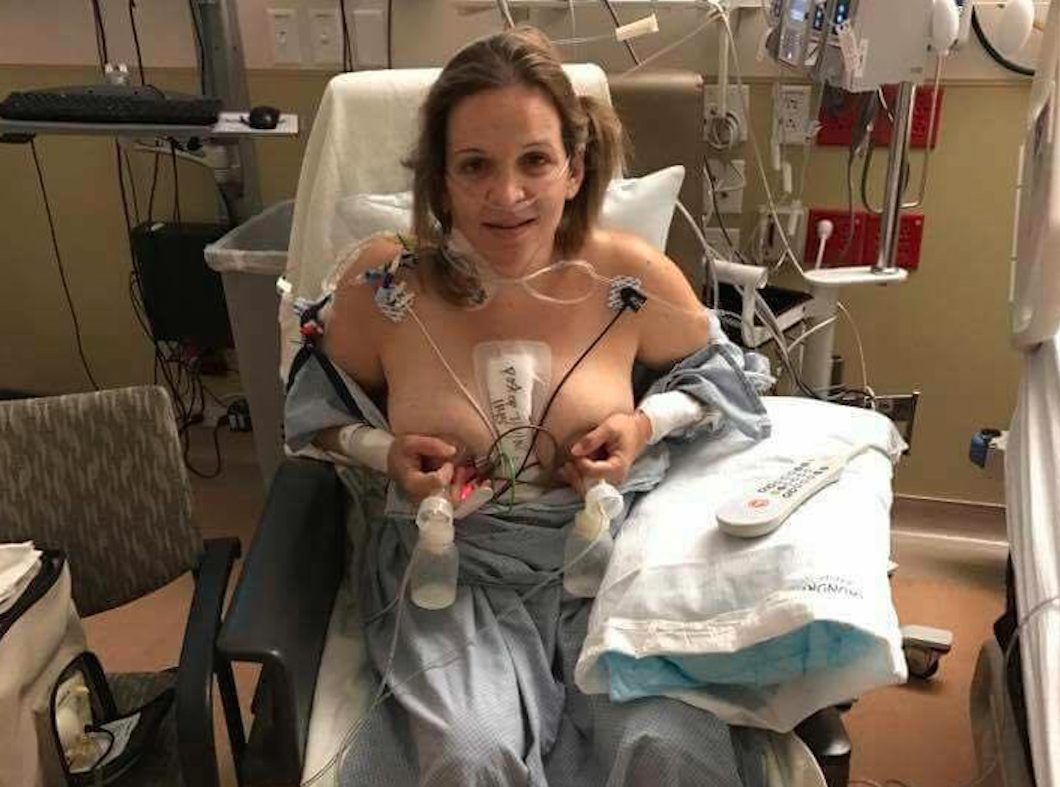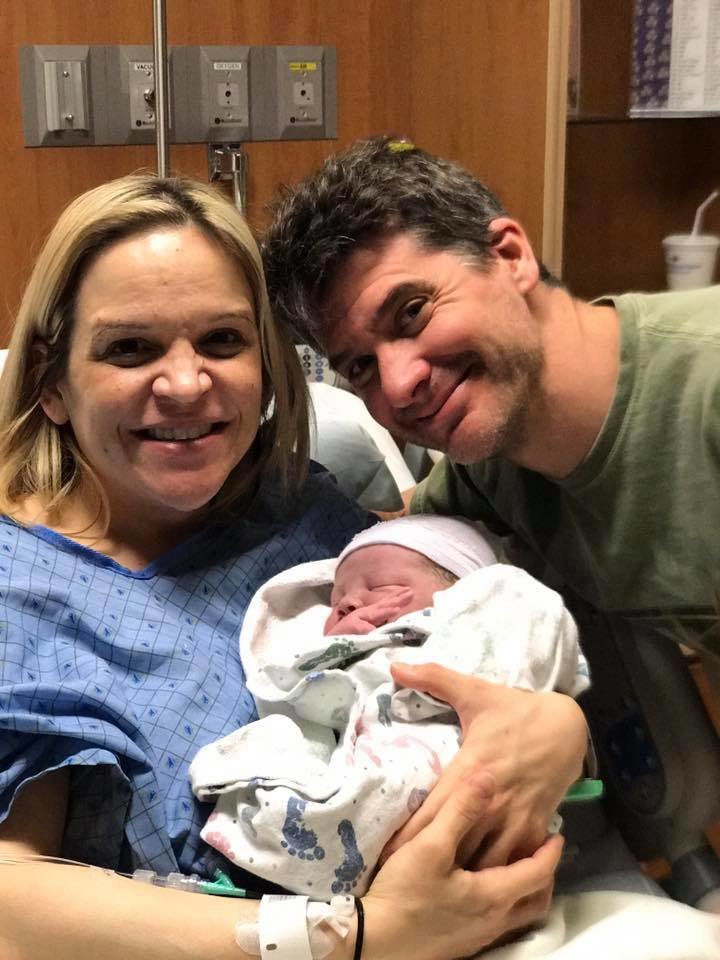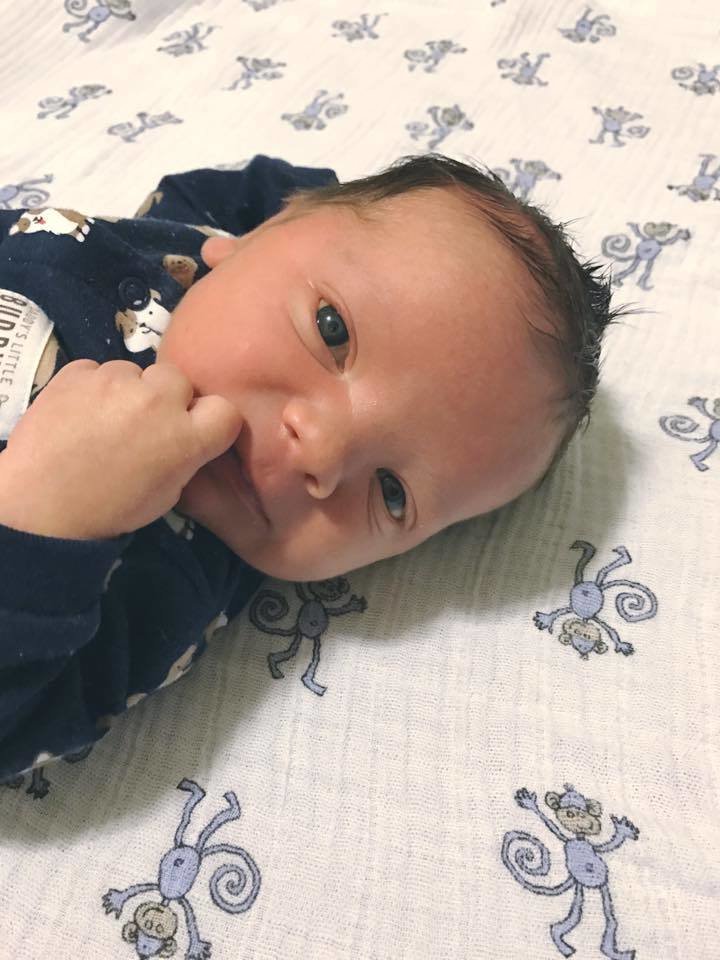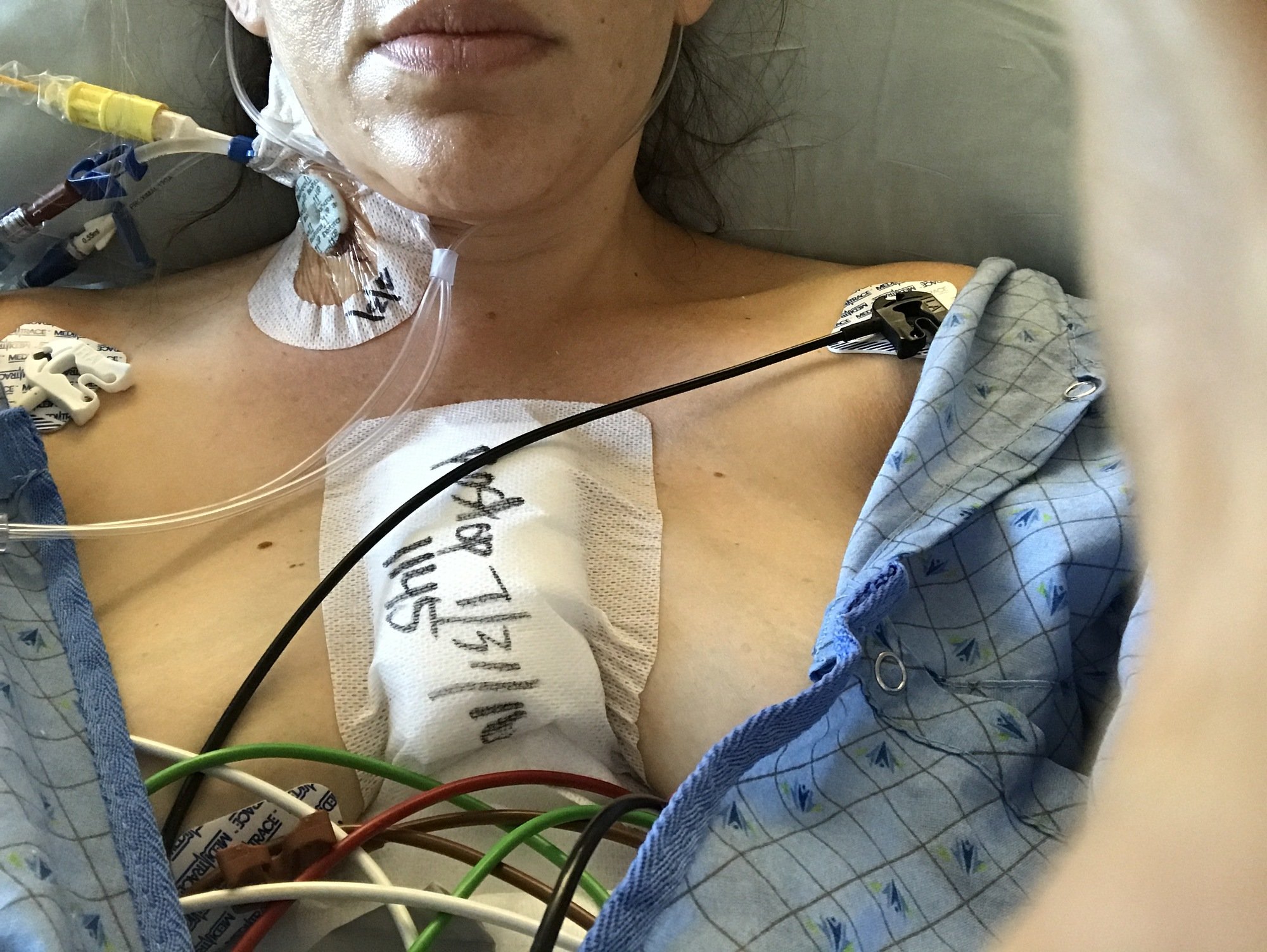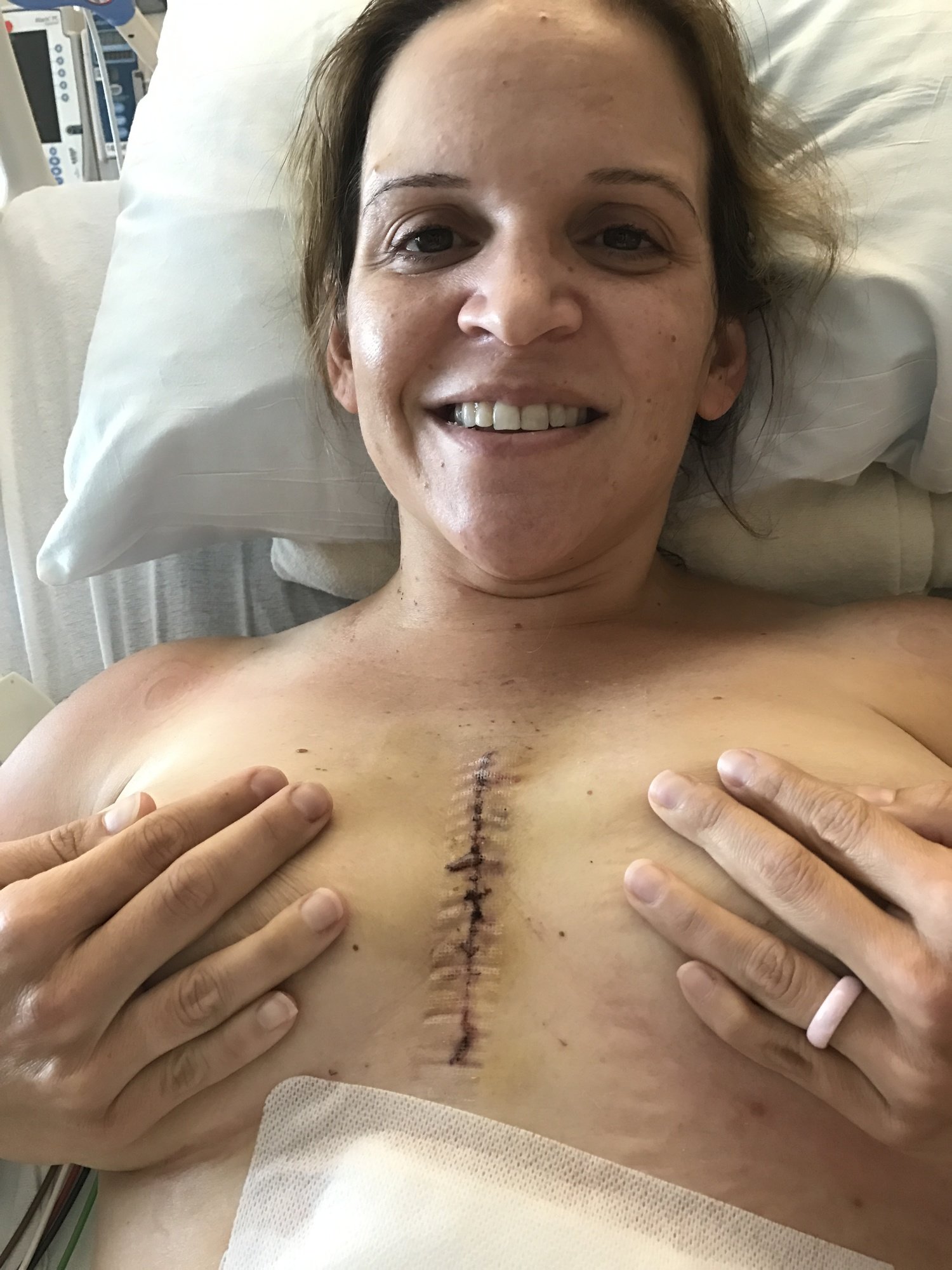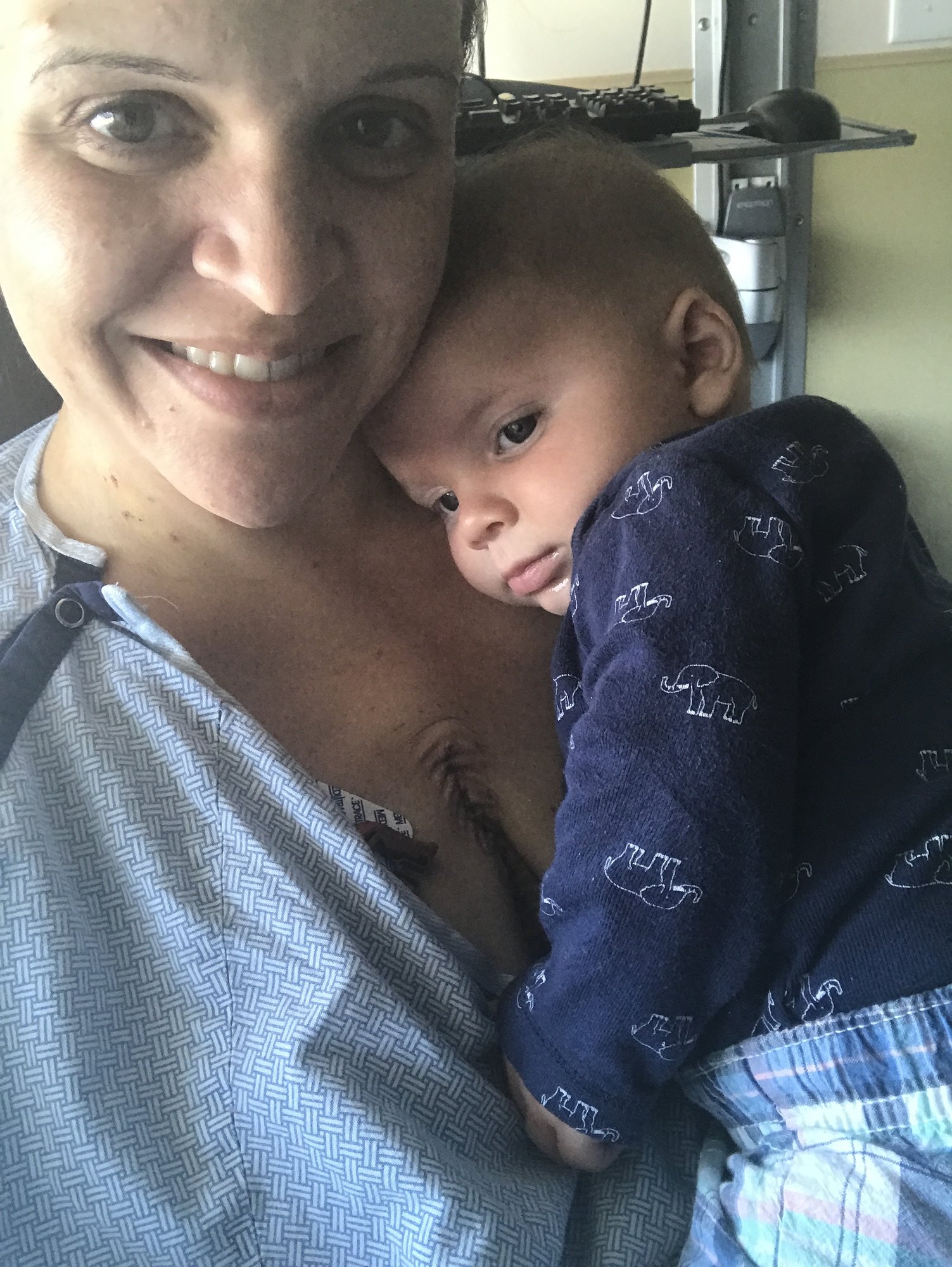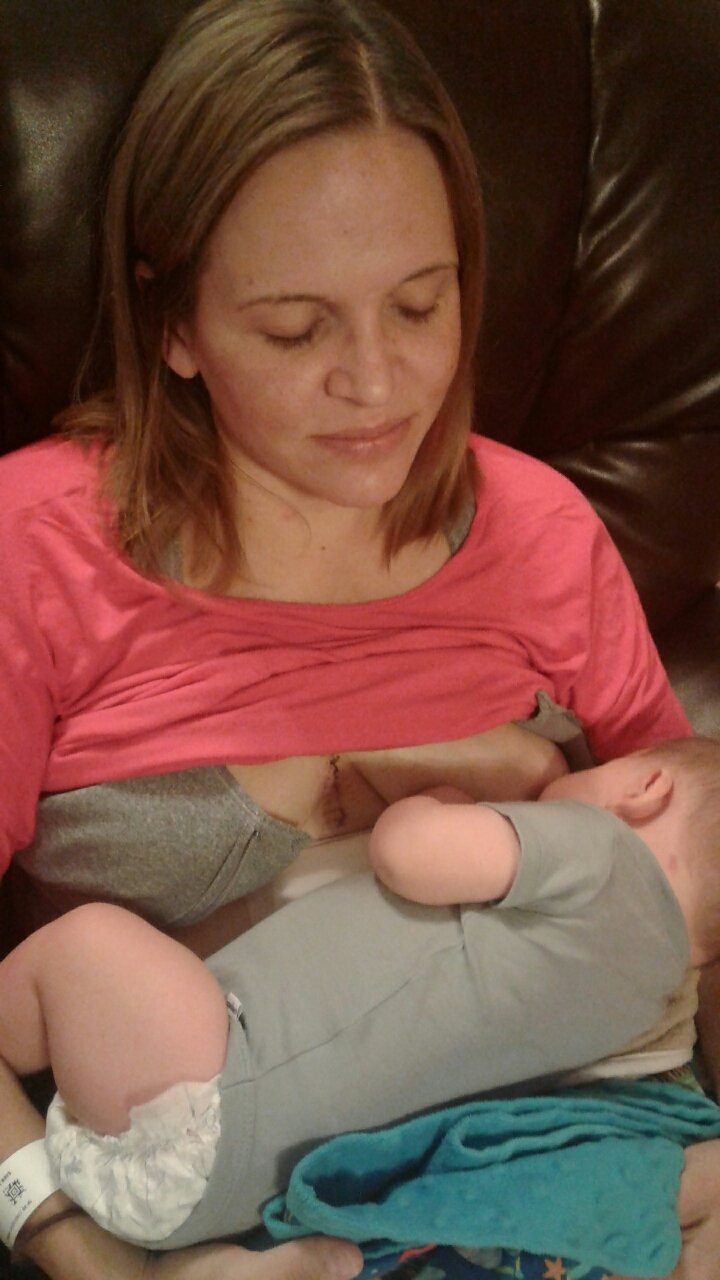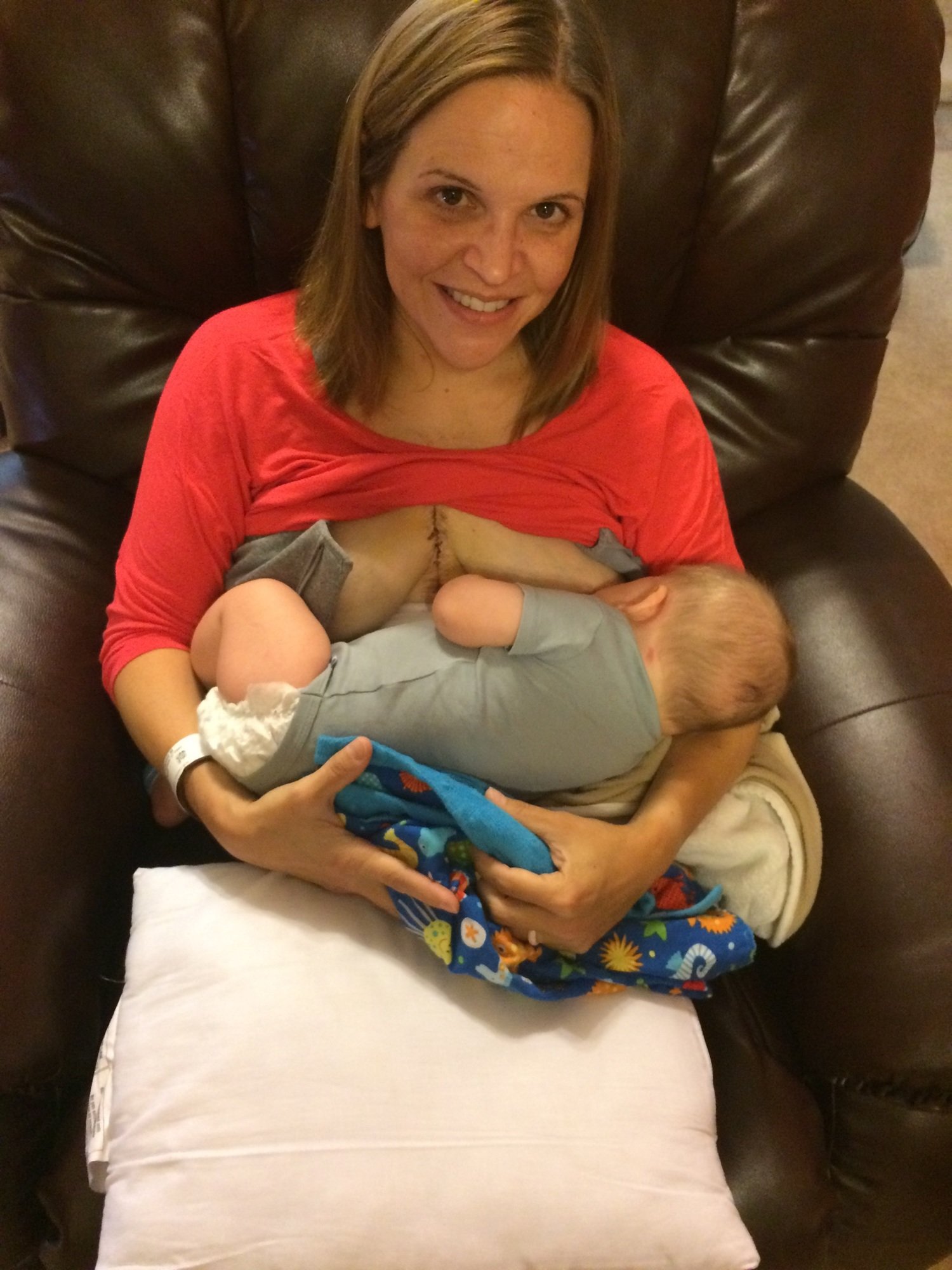“I had no previous symptoms and no real reason to suspect that they were actually going to find anything,” she says. “After my test, the cardiologist came in and told me that they were going to take me over for a CT scan. I’m an ER nurse. I immediately knew what was going on, it was just a matter of how bad it was.” According to Mayo Clinic, a thoracic aortic aneurysm is a weakening in part of the aorta that can cause life-threatening bleeding. It was decided that she would undergo open-heart surgery on July 31. Sampson decided not to save the milk she pumped because she didn’t want to have to worry about sterilizing parts or storing it while in the hospital. However, knowing that she could successfully pump during her stay in order to keep up her supply felt like a major win. “This pic is less than 24 hours post open-heart surgery. (And had I known I’d ever share it, I would’ve made her fix that darn side pony tail ),” she shared with Breastfeeding Mama Talk’s Facebook page. “This picture represents one of my greatest accomplishments.” According to Mayo Clinic, aortic dissections are most common in older men and typical induce symptoms including sudden severe chest pain, abdominal pain, and loss of consciousness. Dr. Frank Criado, a vascular surgeon and endovascular specialist, reported that 80 percent of untreated cases result in death by the end of two weeks and Samspon says she has no idea what year even her dissection possibly occurred. “At some time in my life, probably within the last few years, my aorta dissected. I don’t remember ever having chest pain. I have no idea when this injury occurred,” she says. “He explained that only 10 percent of patients that suffer an aortic dissection survive without intervention and he couldn’t think of a case of a woman that survived child birth with an unknown dissection and survived.” After that first latch, Sampson worked to nurse him as much as possible and her husband supplemented Eli with a bottle. “I couldn’t pick him up for six weeks so my husband would bring him to me when it was time to eat,” she says. “He would wake with him in the night. He did everything for a while. After about three weeks, I was able to nurse him only. Eventually I was able to make extra milk again for donation.” “Why did I share my story? Like I said, there was no information about breastfeeding after open-heart surgery available on the internet. I thought, ‘Hey I figured out a way to do this and if it can help just one mom, then lets share!’” she says. “I also shared because breastfeeding is hard. Mothering is hard. We all share the pretty moments and rarely share the vulnerable ones. Can’t get much more vulnerable and real than naked with a hospital gown, tubes coming out of everywhere, no make up, looking like hell and just trying to be a mom.”
